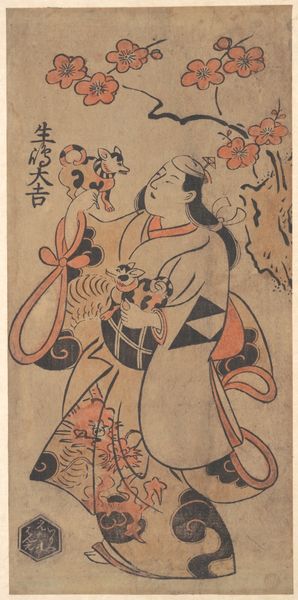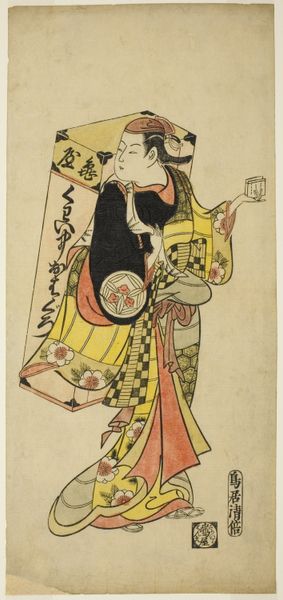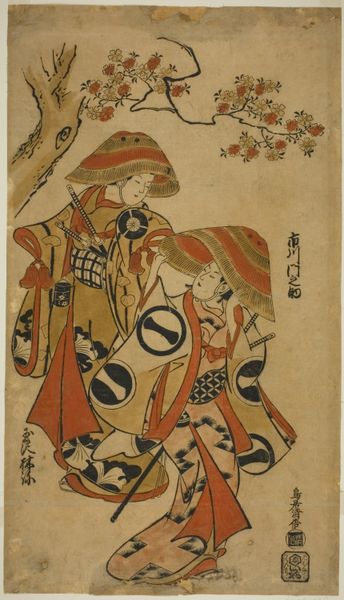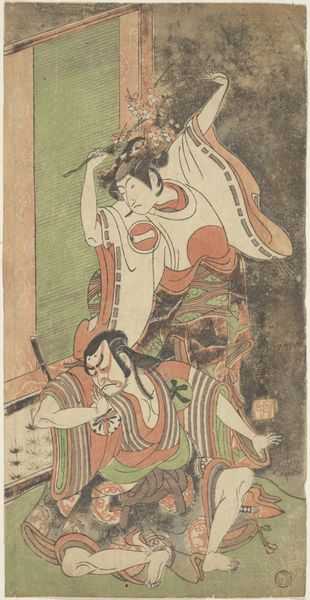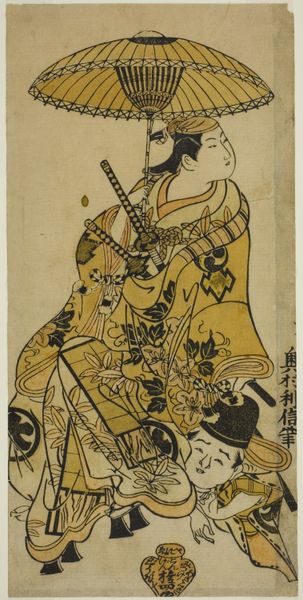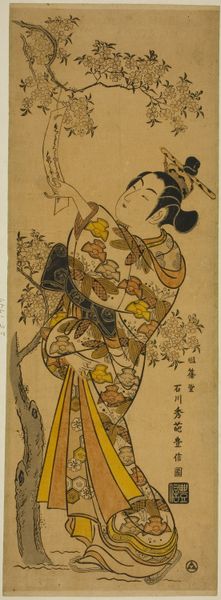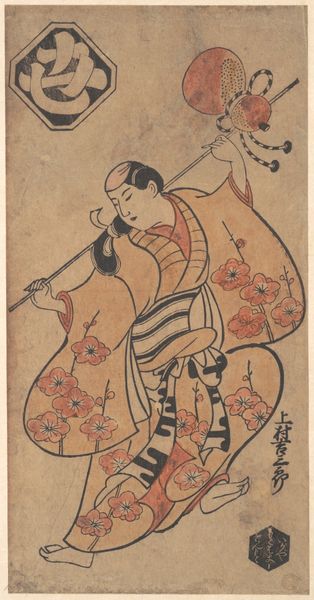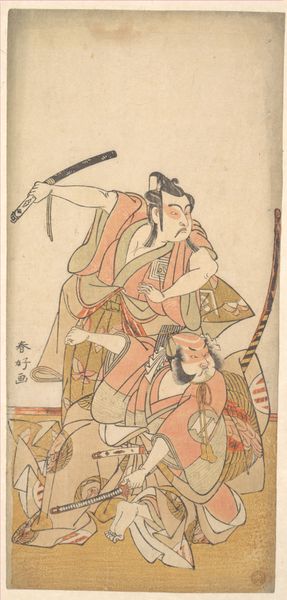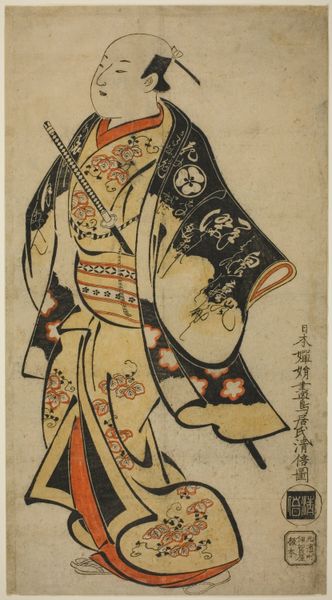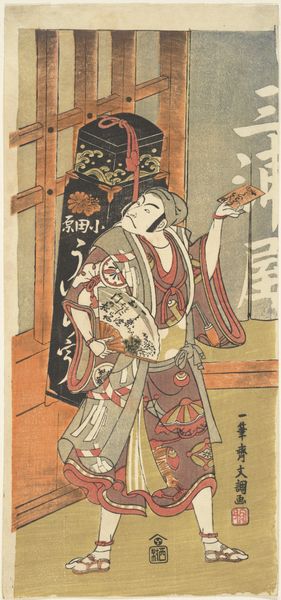
The Actor Ichikawa Danjuro II as Soga no Goro and Nakamura Takesaburo I as Kewaizaka no Shosho in the play "Bando Ichi Kotobuki Soga," performed at the Nakamura Theater in the first month, 1715 1715
0:00
0:00
print, woodcut
#
narrative-art
# print
#
asian-art
#
ukiyo-e
#
figuration
#
woodcut
#
genre-painting
Dimensions: 30.3 × 15.6 cm
Copyright: Public Domain
Torii Kiyonobu I created this woodblock print in 1715, capturing actors in a Kabuki play at the Nakamura Theater, awash with symbolic meaning. The garments worn by Ichikawa Danjuro II, patterned with bold geometric designs, act as visual identifiers, while the three comma-shaped swirls known as mitsudomoe, seen on Nakamura Takesaburo I, are ubiquitous in Japanese iconography. The mitsudomoe has a complex genealogy, appearing in Shinto and Buddhist contexts, often associated with war deities, and as a symbol representing the dynamic interplay of heaven, earth, and humanity. Its spiraling form echoes the cycle of life and death, constantly evolving. Such patterns, though seemingly simple, engage viewers on a deep, subconscious level. The recurrence of these symbols across centuries, imbued with shifting cultural values and psychological associations, reveals a cultural memory that continues to resonate. The mitsudomoe is more than just decoration; it is a profound articulation of existential forces passed down through history.
Comments
No comments
Be the first to comment and join the conversation on the ultimate creative platform.
